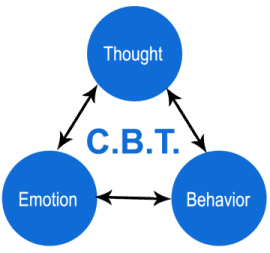Cognitive Behavioural Therapy
Cognitive behavioural therapy (CBT) is a pragmatic, highly structured, solution-focused therapy. It tends to focus on current difficulties rather than explore the historical origins of them. It also relies on a collaborative therapeutic relationship between therapist and client to deal with the presenting problems. CBT is underpinned by the beliefs/assumptions that the way a person thinks affects the way he/she feels and behaves . The goal of CBT is therefore to facilitate change in clients' thought patterns and in turn change their responses (feels and behaviours) to difficult situations.
When It's Used
CBT approach can be used for
- children, adolescents, and adults
- individuals, families, and couples.
- the management of mental health issues such as depression, generalized anxiety disorder, post-traumatic stress disorder, anger issues, panic disorders, social phobia, eating disorders, obsessive-compulsive disorder etc.
- management of chronic pain conditions and associated distress.
What to Expect
- In CBT you will learn how
1) to identify the thoughts you have about current problems,
2) to determine whether or not these thoughts are realistic/helpful and
3) to determine the effect they have on your feelings and behaviours.
- If these thoughts are deemed unrealistic and unhelpful, you will learn alternative and more realistic ways of thinking. You will also learn skills that help you change your thinking patterns so they are more accurate with respect to a given situation.
- You will probably get “homework” to do in-between sessions. The 'homework' normally ranges from how to apply the skills and solutions you come up with in therapy, to the way you think and act in your daily life, e.g. keeping a diary or writing down your thoughts and behaviour patterns





